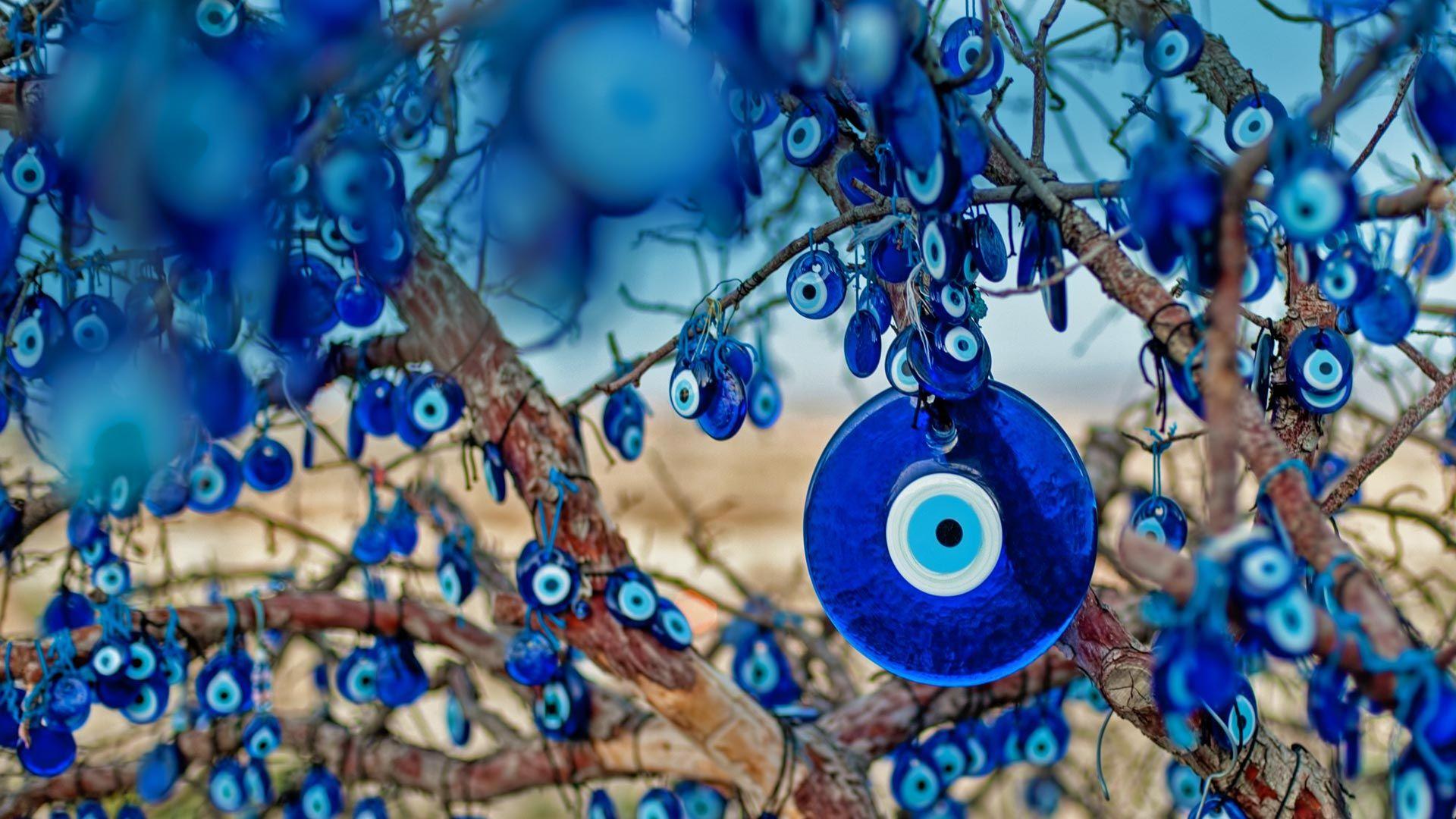Origins of the Greek Evil Eye: A Journey Through History
The concept of the Evil Eye dates back thousands of years, with references found in ancient texts and artifacts. The Greeks believed that certain individuals possessed the power to harm others simply by looking at them with envy or ill will. This malevolent gaze, known as the Evil Eye, was thought to bring misfortune, illness, or even death to the person targeted.
The earliest evidence of the belief in the Evil Eye can be traced back to ancient Mesopotamia, Egypt, and Greece. However, it was the Greeks who popularized the use of the Evil Eye amulet as a protective measure against this malevolent force. The Greek philosopher Plato mentioned the concept of the Evil Eye in his writings, highlighting its significance in ancient Greek culture.
The Symbolism of the Greek Evil Eye
The Greek Evil Eye is a powerful symbol that embodies protection, good luck, and the warding off of negative energy. Traditionally, it is represented as a blue eye, often surrounded by concentric circles. The color blue is significant because it was believed to be the color that could repel evil spirits. In Greek culture, blue is associated with the gods and divine protection, making it the ideal choice for the Evil Eye symbol.
In addition to its protective qualities, the Greek Evil Eye also symbolizes the concept of kallos, which means beauty in Greek. This duality reflects the belief that beauty can attract envy, and thus the Evil Eye serves as a shield against the potential harm caused by envy.
How the Greek Evil Eye Protects: The Science Behind the Myth
While the belief in the Evil Eye may seem superstitious to some, it has roots in psychological and social phenomena. The idea of the Evil Eye taps into the human fear of envy and the negative energy that can be directed towards individuals who are successful, beautiful, or fortunate. By wearing or displaying the Greek Evil Eye, people believe they can deflect this negative energy and protect themselves from harm.
Psychologists have studied the concept of the Evil Eye and its impact on individuals and communities. They have found that the belief in the Evil Eye can serve as a psychological comfort, providing a sense of control in situations where people feel vulnerable to the envy or malice of others.
Modern Uses of the Greek Evil Eye
The Greek Evil Eye has transcended its ancient origins and remains a popular symbol in modern times. It is commonly found in jewelry, home decor, and even fashion. People wear Evil Eye amulets as necklaces, bracelets, and earrings to protect themselves from negative energy and to bring good luck.
In addition to personal adornment, the Greek Evil Eye is also used in homes and workplaces to create a protective environment. Many Greeks hang an Evil Eye amulet near the entrance of their homes or in their offices to ward off any potential harm.
The Global Influence of the Greek Evil Eye
While the Evil Eye is deeply rooted in Greek culture, its influence has spread far beyond the borders of Greece. The symbol is recognized and revered in many cultures around the world, including in the Middle East, Latin America, and parts of Asia. Each culture has its own variation of the Evil Eye, but the underlying belief in its protective power remains consistent.
In Turkey, for example, the Evil Eye, known as Nazar, is a ubiquitous symbol found in homes, businesses, and vehicles. Similarly, in Italy, the Malocchio is believed to protect against the Evil Eye, with people often wearing charms or performing rituals to ward off its effects.
The Greek Evil Eye in Popular Culture
The Greek Evil Eye has also made its way into popular culture, appearing in movies, television shows, and literature. Its distinctive design and cultural significance have made it a popular motif in fashion and art. Celebrities and influencers often wear Greek Evil Eye jewelry, further popularizing the symbol and its associated beliefs.
Moreover, the Greek Evil Eye has become a trendy item in the global marketplace, with countless online stores offering a wide range of Evil Eye products. From luxury jewelry brands to handmade artisanal crafts, the demand for Evil Eye items continues to grow, reflecting the symbol's enduring appeal.
Conclusion: The Timeless Power of the Greek Evil Eye
The Greek Evil Eye is more than just an ancient symbol; it is a testament to the enduring power of cultural beliefs and traditions. Its significance has evolved over time, but its core purpose remains the same: to protect against the negative forces of envy and to bring good fortune to those who embrace it. Whether worn as a piece of jewelry or displayed as a decorative object, the Greek Evil Eye continues to serve as a powerful reminder of the human desire for protection and well-being.


